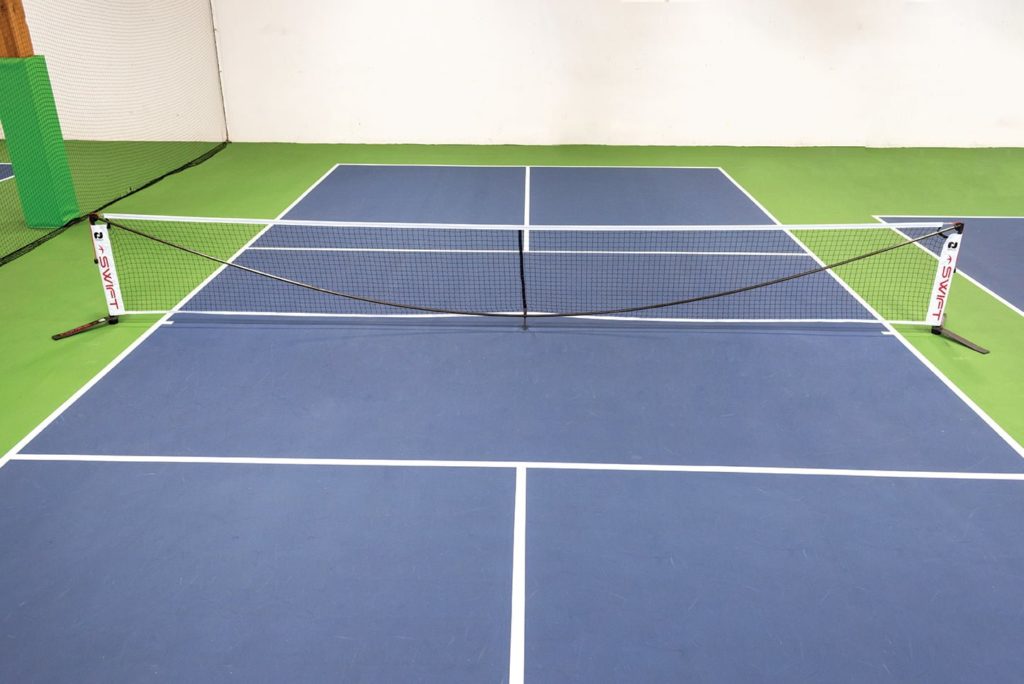Top Quality Pickleball Court Construction for every single Level of Play
Top Quality Pickleball Court Construction for every single Level of Play
Blog Article
Lasting Practices in Pickleball Court Building You Should Know
As the popularity of pickleball remains to increase, so too does the demand for sustainable techniques in court building and construction. This method not only addresses ecological issues yet likewise improves the longevity and performance of the courts. From picking environment-friendly materials to applying efficient water drainage and energy-saving illumination solutions, there are numerous methods to think about. The influence of these techniques expands far beyond the court itself. Comprehending how each aspect adds to a much more lasting future welcomes even more exploration right into the detailed equilibrium in between entertainment development and environmental stewardship.
Selecting Eco-Friendly Materials
Selecting environment-friendly materials is a critical action in the building of lasting pickleball courts. The selection of lasting products not only lessens environmental effect however additionally enhances the long life and efficiency of the court. Trick materials include reused rubber for the surface, which uses exceptional longevity and shock absorption while drawing away waste from land fills.
Additionally, making use of in your area sourced materials decreases transport emissions and supports regional economic climates. Pickleball court construction. Utilizing indigenous hardwoods for fencing and seats can supply a lasting visual while making sure resilience versus the elements.
Integrating permeable products for court structures can better contribute to sustainability by permitting for all-natural water drain and minimizing drainage. These options not just shield regional communities yet also promote much healthier play atmospheres.
Efficient Water Drainage Solutions
While the selection of eco-friendly materials is essential, implementing reliable drain services is similarly essential for preserving sustainable pickleball courts. Appropriate drain not just protects the court surface area from water damages however additionally decreases erosion and runoff, advertising ecological honesty.
Reliable water drainage systems can consist of absorptive paving, which permits water to penetrate the ground instead of merging on the surface area. This minimizes the possibility of standing water, which can lead to mold and various other upkeep problems. Furthermore, integrating tactically placed drain networks and swales can guide excess water away from the court location, guaranteeing a completely dry having fun surface area and preventing soil disintegration.
Using native plant life in the landscaping around the courts can further improve drainage by absorbing excess water and reducing overflow. These plants call for much less watering and promote biodiversity, straightening with sustainable techniques.
In addition, it is vital to consistently preserve the water drainage system to ensure its lasting effectiveness. This consists of clearing up debris and tracking for clogs. By prioritizing efficient drain solutions, pickleball court contractors can dramatically add to the sustainability and durability of the facility, eventually profiting both gamers and the environment.
Energy-Efficient Lights Options
As the demand for pickleball remains to grow, integrating energy-efficient illumination alternatives right into court design has ended up being progressively important for sustainability. Typical illumination systems frequently take in extreme energy, adding to greater operational expenses and environmental effect. As a result, taking on modern, energy-efficient innovations is crucial for both new building and constructions and improvements.
LED (Light Emitting Diode) illumination stands apart as a premier selection because of its longevity and power cost savings (Pickleball court construction). Contrasted to traditional lighting, LEDs utilize about 75% much less power and can last up to 25 times much longer, considerably reducing upkeep costs. Furthermore, the directional nature of LED illumination minimizes light pollution, making sure that illumination is concentrated on the court instead than bordering locations.

Lasting Surface Area Alternatives
Checking out lasting surface area choices for pickleball courts has acquired grip amongst builders and players alike. The focus on green materials not just lines up with the growing environmental awareness but also improves the efficiency and durability of the courts.
One prominent option is the use of recycled rubber, which can be sourced from made use of tires. This material offers superb shock absorption, lowering the threat of injuries for gamers while promoting sustainability. Furthermore, modular tiles made from recycled plastics use another sensible alternative. These tiles are easy to replace and set up, and their flexibility enables for various court configurations.
All-natural grass courts are also emerging as a lasting choice, promoting biodiversity and minimizing the warmth island result. Nevertheless, they call for regular upkeep and water, which might not line up with all sustainability goals.

Water Preservation Strategies

Another efficient technique entails the installation of rain harvesting systems. These systems store and gather rain for use in keeping court surface areas and landscaping. This technique not just conserves safe and clean water however also reduces reliance on community sources.
In addition, utilizing drought-resistant landscaping around the courts is essential. Native plants call for less water and are better adapted to neighborhood environment problems, hence lowering total water consumption. Additionally, utilizing effective irrigation systems, such as drip watering, makes sure that water is supplied straight to plant roots, minimizing evaporation and waste.
Conclusion
Integrating lasting techniques in pickleball court building look at this site significantly contributes to ecological conservation important source and resource effectiveness. By focusing on these practices, the construction of pickleball courts can align with wider ecological goals while advertising durability and functionality within communities.
As the appeal of pickleball proceeds to climb, so also does the need for sustainable techniques in court construction.Selecting green materials is a vital step in the construction of lasting pickleball courts. By focusing on energy-efficient illumination alternatives, pickleball court producers can add to a much more sustainable future while satisfying the demands of stakeholders and gamers alike.Integrating sustainable surface choices not just improves the performance of pickleball courts but additionally leads the method for executing effective water preservation strategies.Integrating sustainable techniques in pickleball court building dramatically adds to environmental conservation and resource performance.
Report this page